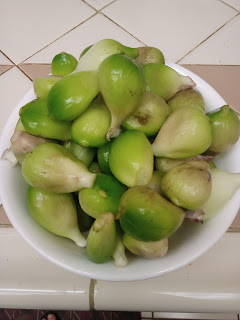I get quite a few questions from people asking me what I feed my rabbits, especially after they find out that I feed them almost completely out of my yard.
Keep in mind that I live in the deep deep south on the west side of Florida. Most of the year I have some kind of green stuff to give them, even if it is just grass.
I don't knowingly give them plants that I know to be toxic, like pokeweed, poinsettia, amaryllis, ferns, cherry laurel, 4 o'clock, croton, and crinum, though I do have those in my yard.
Grasses
When I feed grass, I always try to offer a higher protein feed with it, like my go-to water hyacinth, which I like to refer to as the alfalfa of the South.
- Bahia grass
- Papyrus
- Elephant grass, also called Napier grass
- Sedge
- Crabgrass
Herbs
Rabbits can eat everything we can eat and more. These plants are seasonal, and they may have a whole bunch of one plant on one day and then a whole bunch of another plant the next day. They have no digestive issues, despite what you might read online when it comes to varying up diets.
- Mulberry
- Pear
- Hibiscus including Chinese and Turks Cap
- Roses including thorns
- Grape leaves
- American Beautyberry
- Loquat
- Gingers, including False Cardamom, Shell, and Shampooo
- Cannas
- Perennial Peanut
- Daisies, especially Spanish Needle
- Tradescantia species, including Spiderwort, Purple Heart, and Small Leaved Tradescantia
- Sages, including Tropical Sage and Swamp Sage
- Hoja Santa
- Copperleaf
- Spanish Bayonet
- Citrus anything including Lemon with thorns, Tangerines
- Sprouted Dent Corn
Other stuff
There are a few plants that they can eat, but maybe they don't like so much. These are what they eat last or not at all.
- Sago Palm
- African Honeysuckle
- Agave
- Sycamore leaves in the fall
They get some human food too. My family once asked me why I dont have a compost bin. The reason is because the rabbits eat most human foods, but I don't feed them meat or oily things, not that I have a lot of that around to throw away.
- Apple cores
- Pear cores
- Banana peels
- Orange and Lemon peels
- Limp fennel
- Basil, Cilantro, and herbs that have been forgotten
- Pepper tops with seeds
- Uneaten peanut butter and jelly sandwiches
- Dry or weird bread
- Leftover plain popcorn






































